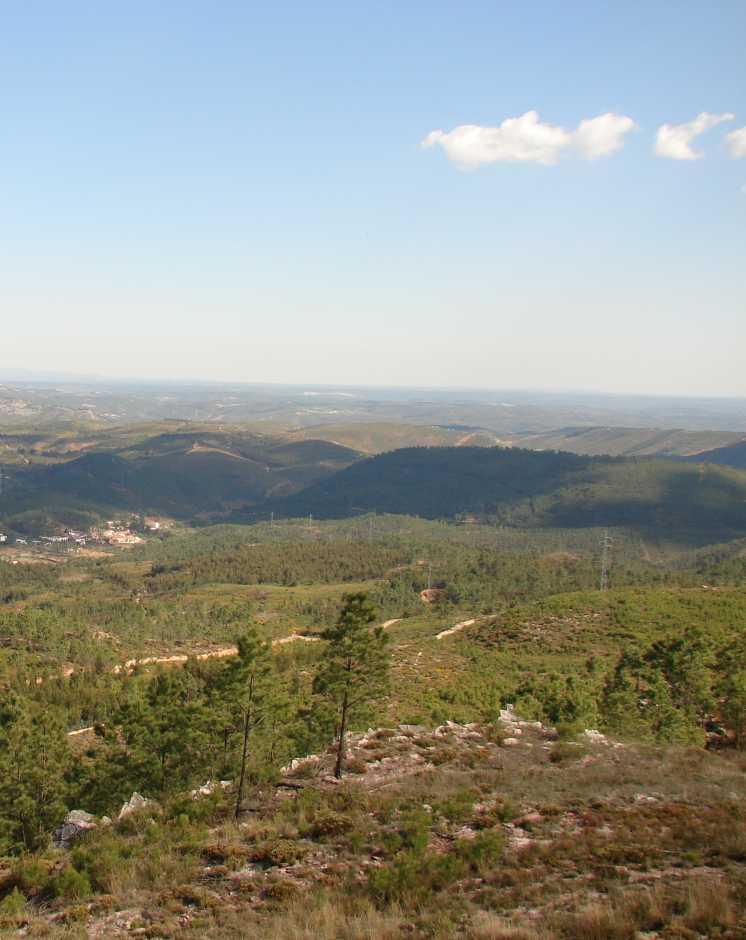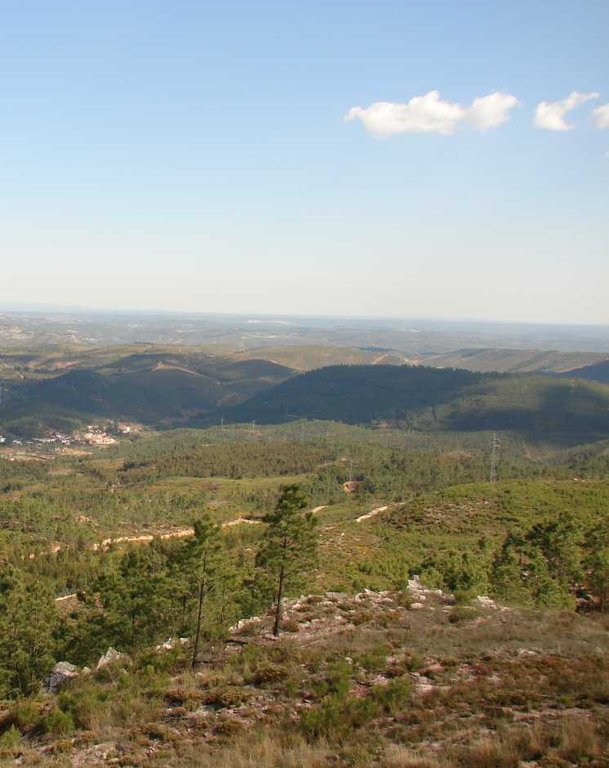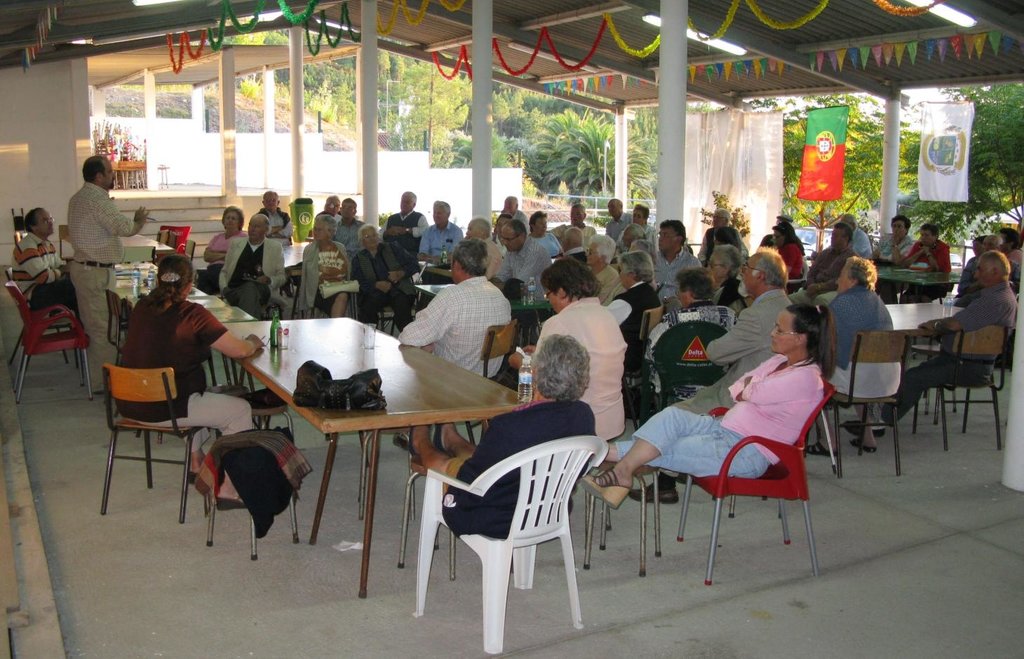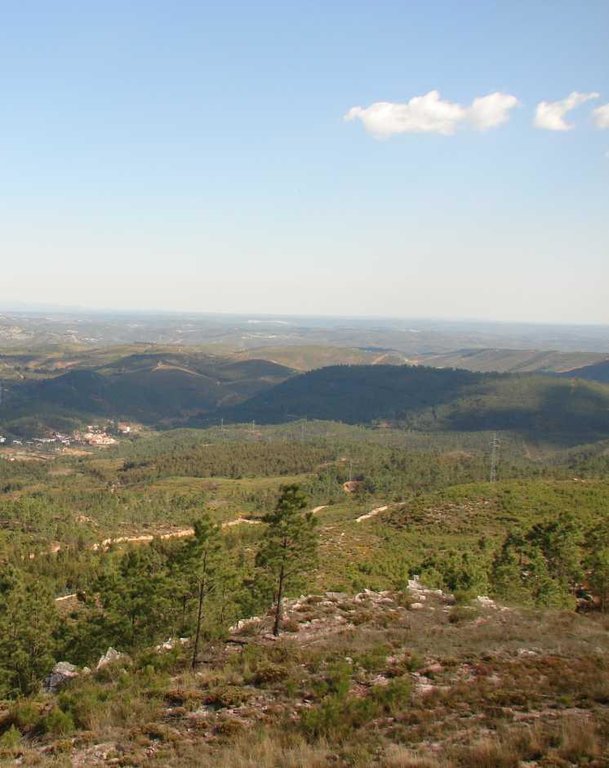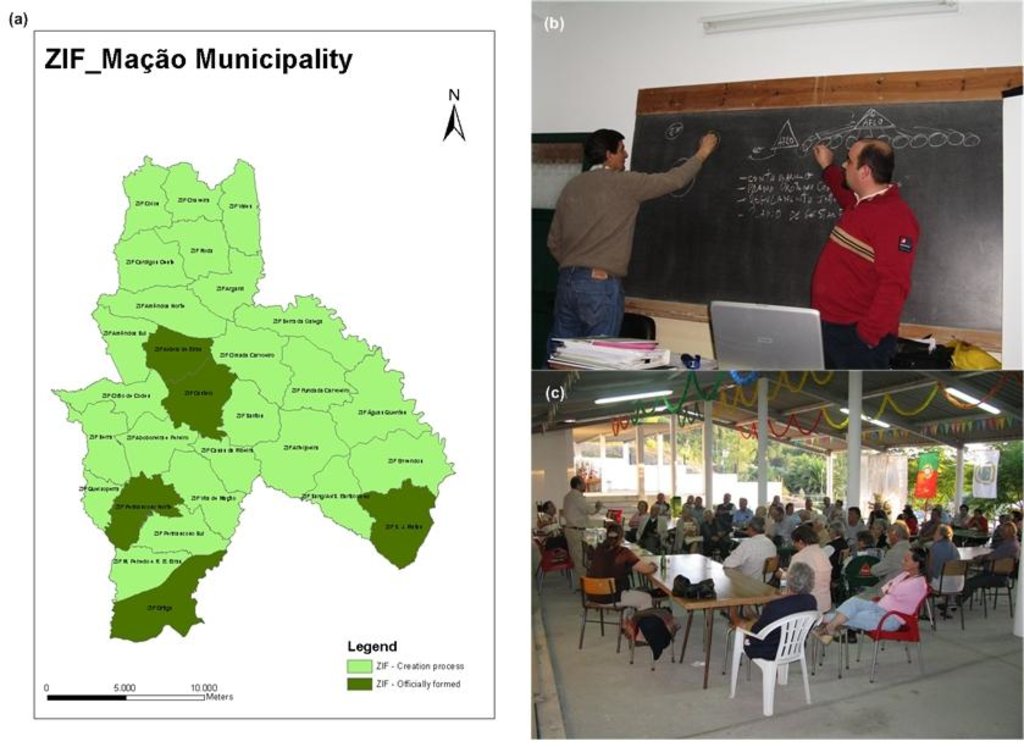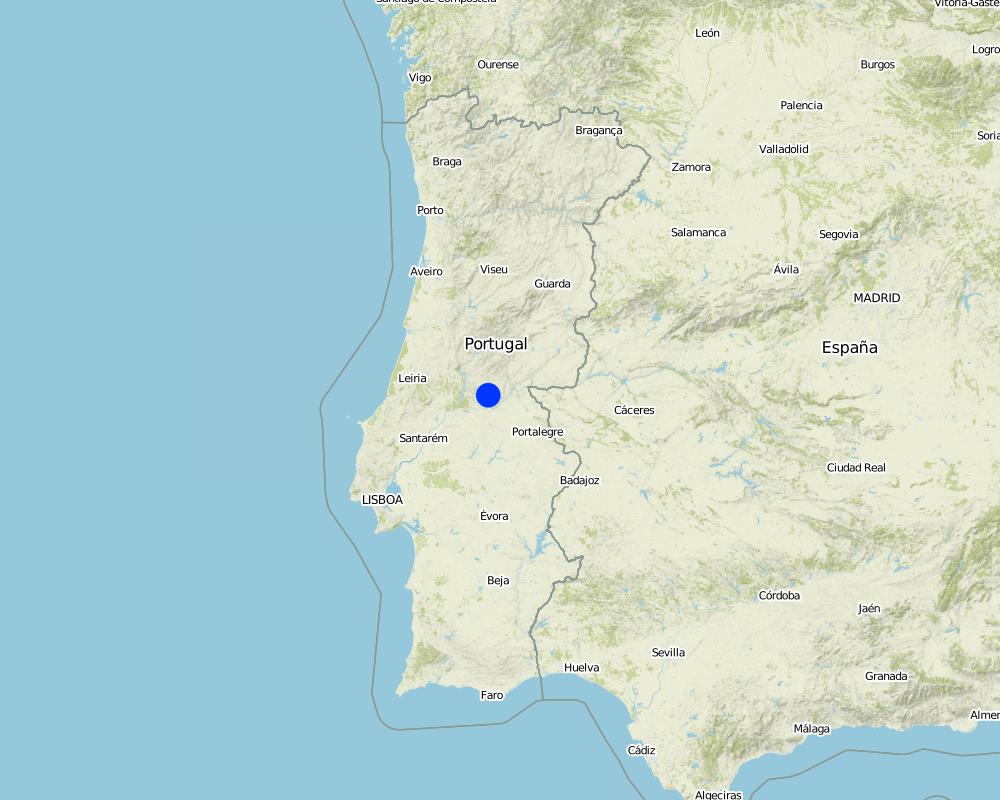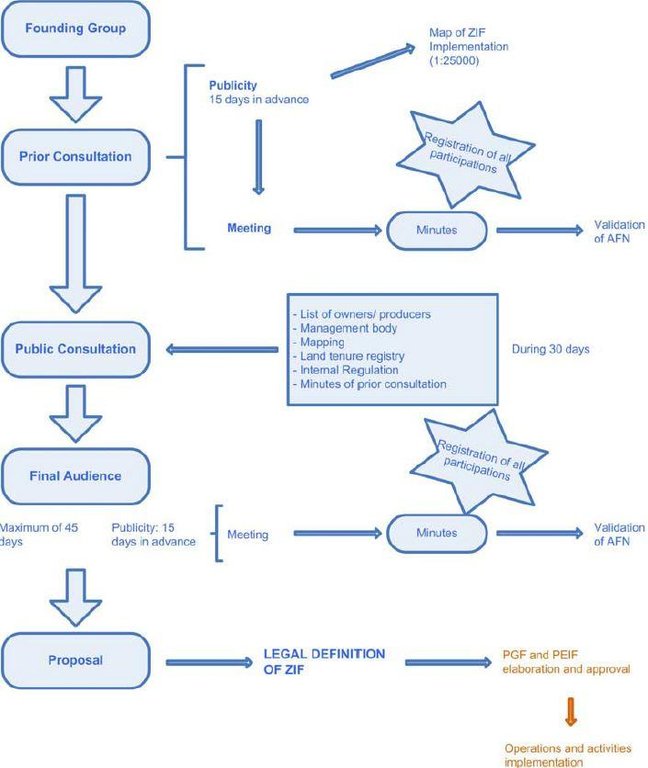Forest Intervention Area (ZIF) [البرتغال]
- تاريخ الإنشاء:
- تحديث:
- جامع المعلومات: Celeste Coelho
- المحرر: –
- المُراجع: Fabian Ottiger
Zona de Intervenção Florestal (Portuguese)
approaches_2588 - البرتغال
عرض الأقسام
توسيع الكل طي الكل1. معلومات عامة
1.2 تفاصيل الاتصال بالأشخاص الرئيسيين لمصدر المعلومات والمؤسسات المعنية بتقييم وتوثيق النهج
متخصص في الإدارة المستدامة للأراضي:
اسم المؤسسة (المؤسسات) التي سهلت توثيق/تقييم النهج (إذا كان ذلك على صلة)
University of Aveiro (University of Aveiro) - البرتغال1.3 الشروط المتعلقة باستخدام البيانات الموثقة من خلال WOCAT
متى تم تجميع البيانات (ميدانيا)؟:
10/02/2009
يوافق جامع المعلومات والشخص (لاشخاص) الرئيسي لمصدر المعلومات على الشروط المتعلقة باستخدام البيانات الموثقة من خلال WOCAT:
نعم
1.4 المراجع الخاصة باستبيان(استبيانات) تقنيات الإدارة المستدامة للأراضي
2. وصف نهج الإدارة المستدامة للأراضي
2.1 وصف موجز للنهج
Forest Intervention Area (ZIF) is a territorial unit, where the main land use is forestry. This approach assembles and organizes small forest holders and defines a joint intervention for forest management and protection. Defined by law in 2005, and revised in 2009, each ZIF of private forest has to include at least a contiguous area of 750 ha, 50 landowners and 100 forest plots, and has to be managed by a single body, defined by ZIF members.
2.2 وصف تفصيلي للنهج
وصف تفصيلي للنهج:
Aims / objectives: The ZIF overall objective is to promote the efficient management of forest and to mitigate current constraints of forest intervention (e.g. land size and tenure). Other objectives are to develop structural measures for fire prevention, to integrate local and central administration actions and to implement the national and regional forest management policy at the local level. The final purpose of ZIF areas is to improve productivity in rural forest areas, contributing to rural development
Methods: The idea emerged after the catastrophic wildfires of 2003 and was developed and presented by a group of stakeholders (landowners, forest associations, City Council, among others) to the Ministry of Agriculture, Rural Development and Fisheries. The ZIF approach was legislated by Law 127/2005, and revised under Law 15/2009. Each ZIF assembles small properties, which will be jointly managed by a single entity, which can be a non-profit-making and voluntary organization or some other group of people approved by the forest owners. Each ZIF will have a Forest Management Plan (PGF), where the forestry operations and activities for ZIF area are defined accordingly to the guidelines of the Regional Plan for Forestry Management and Planning (PROF), and a Specific Plan to Forest Protection (PEIF), which includes actions to protect forest against biotic and abiotic risks. The management entity should have a team with qualifications and experience in forestry and with technical ability to design these plans.
Stages of implementation: The legal constitution of ZIF includes six mandatory steps, namely the constitution of the founding group (group of landowners with at least 5% of a continuous area inside the ZIF), the prior consultation meeting, the public consultation, the final audience meeting, the proposal submission to the National Forest Authority (AFN) and legal publication of each ZIF (already done). After these procedures, the PGF and PEIF of each ZIF will be designed by the management entity and evaluated and approved by AFN. The implementation activities can then be implemented by the management entity or by individual landowners following the rules described on the plans. PEIF validity is five years and PGF validity is 25 years (still in preparation). [See figure below].
Role of stakeholders: The founding group is mainly composed of forest owners and producers and is the starting point for creating a ZIF. The management entity administers the ZIF in order to achieve their main purposes and the aims defined on the plans. AFN will support and monitor ZIF activities. ZIF non-supporting landowners are obliged to have a PGF for their land, as well as to accomplish the PEIF of the ZIF.
Other important information: The landowners inside the ZIF who are non-supporters do not have a clear role. Based on PROF - Plano Regional de Ordenamento Florestal (Regional Plan for Forestry Management and Planning), for ownerships of > 25 ha, the owners are obliged to have a PGF - Plano de Gestão Florestal (Plan for Forestry Management) for their property.
2.3 صور عن النهج
2.5 البلد/المنطقة/المواقع التي تم تطبيق النهج فيها
البلد:
البرتغال
المنطقة/الولاية/المحافظة:
Santarém
مزيد من التفاصيل حول الموقع:
Mação
Map
×2.6 تواريخ بدء وإنهاء تنفيذ النهج
أشر إلى سنة البدء:
2003
2.7 نوع النهج
- قائم على مشروع/برنامج
2.8 الغايات/الأهداف الرئيسية للنهج
The Approach focused mainly on other activities than SLM (The main objective is to increase land management and profitability)
- To promote the sustainable management of forest; - To coordinate the protection of forest and natural areas; - To reduce the conditions to fire ignition and spread; - To coordinate the recovery of forest and natural areas affected by forest fires; - To give territorial coherence and effectiveness to the action of local administration and others actors.
The SLM Approach addressed the following problems: - lack of forest planning and management, forest fires, land structure and tenure, land abandonment, rural depopulation and ageing.
2.9 الظروف التي تمكن أو تعيق تنفيذ التقنية/التقنيات المطبقة بموجب النهج
المعايير والقيم الاجتماعية /الثقافية/ الدينية
- معيق
Social resistance to this approach. Landowners fear to lose tenure rights. Difficult to reach and find owners due to inheritance and out-migration. Rural depopulation occurred in the last decades.
Treatment through the SLM Approach: Financial support, creation of new job opportunities in rural areas.
توفر/الوصول إلى الموارد والخدمات المالية
- معيق
High implementation cost.
Treatment through the SLM Approach: Governmental incentives
الإطار المؤسساتي
- معيق
Scepticism about the practical effects of this approach. Very high costs for implementation and lack of private investment
Treatment through the SLM Approach: ZIF pilot areas will motivate implementation and investment into other ZIFs.
الإطار القانوني (حيازة الأراضي، وحقوق استخدام الأراضي والمياه)
- معيق
Land structure and tenure (private holdings)
Treatment through the SLM Approach: Minimum area to constitute a ZIF is 750 ha
The existing land ownership, land use rights / water rights greatly hindered the approach implementation The ZIF join small properties and their management is undertaken as a single property, guide by a forest management plan. This entity can be a non-profit and voluntary organization or an other group of people approved by the forest owners and/or producers.
3. المشاركة وأدوار الأطراف المعنية
3.1 أصحاب المصلحة المعنيون بالنهج وأدوارهم
- مستخدمو الأراضي المحليون/المجتمعات المحلية
Gender: mixed, Age: 50 years old
The majority of forest owners are usually pensioners, with low incomes
- متخصصون في الإدارة المستدامة للأراضي / مستشارون زراعيون
AFLOMAÇÃO technicians
- القطاع الخاص
Private organizations
- الحكومة المحلية
- الحكومة الوطنية (المخططون، صانعو القرار)
Municipality
إذا كان هناك العديد من الأطراف المعنية، قم بالإشارة إلى الوكالة الرائدة:
Based on an initial idea from Mação local specialists; the national ZIF legislation emerged in 2005 and was revised in 2009
3.2 انخراط مستخدمي الأراضي المحليين/المجتمعات المحلية في المراحل المختلفة للنهج
| انخراط مستخدمي الأراضي المحليين/المجتمعات المحلية | حدد من شارك وصف الأنشطة | |
|---|---|---|
| المبادرة/التحفيز | تفاعلي | Balance alternatives and take decision to test the agave forestry information sessions about ZIF approach; informal contacts, door-to-door approaches and formal agreement of the landowners to become ZIF members. |
| التخطيط | سلبي | information sessions to present the ZIF plans (PGF and PEIF). |
| التنفيذ | تفاعلي | management activities can be made by the land owners or by the ZIF management entity. Regular meetings with ZIF members |
| الرصد/التقييم | تفاعلي | not defined yet |
| Research | تفاعلي | on-farm research, good practice demonstration and collaboration with research projects. |
3.3 مخطط التدفق (إذا كان متاحًا)
الوصف:
Legal process related with the ZIF constitution (blue)
Elaboration and approval of the ZIF plans (orange)
Implementation of the plans (orange)
3.4 اتخاذ القرار بشأن اختيار تقنية/تقنيات الإدارة المستدامة للأراضي
حدد من الذي قرر اختيار التقنية/التقنيات التي سيتم تنفيذها:
- متخصصون في الإدارة المستدامة للأراضي بشكل أساسي، بعد التشاور مع مستخدمي الأراضي
اشرح:
Users’ perceptions and expectations were also considered.
Decisions on the method of implementing the SLM Technology were made by by SLM specialists alone (top-down)
4. الدعم الفني وبناء القدرات وإدارة المعرفة
4.1 بناء القدرات/التدريب
هل تم تقديم التدريب لمستخدمي الأراضي / الأطراف المعنيين الآخرين؟:
نعم
- opinion leaders
المواضيع المغطاة:
information sessions and individual contacts with opinion leaders
4.2 خدمة استشارية
هل يملك مستخدمو الأراضي وصولا إلى خدمة استشارية؟:
نعم
وصف/تعليقات:
Name of method used for advisory service: Information sessions; Key elements: ZIF process, Explaining rational of ZIF for specific municipality and its conditions like depopulation, forest fires, etc, Elaboration of the ZIF plans; The extension system is well set up to ensure follow-up activities
Advisory service is very adequate to ensure the continuation of land conservation activities
4.3 تعزيز المؤسسات (التطوير التنظيمي)
هل تم إنشاء أو تعزيز مؤسسات من خلال هذا النهج؟:
- نعم، إلى حد كبير
حدد المستوى (المستويات) التي تم فيها تعزيز أو إنشاء المؤسسات:
- محلي
اعط مزيدا من التفاصيل:
City council supports the forest association activities.
4.4 الرصد والتقييم
التعليقات:
There were None changes in the Approach as a result of monitoring and evaluation: (* The monitoring procedures are not structured yet)
4.5 البحوث
هل كانت البحوث جزءًا من النهج؟:
نعم
حدد المواضيع:
- علم الاجتماع
- الاقتصاد / التسويق
- علم الايكولوجيا
- forestry, politics
أعط تفاصيل إضافية وأشر إلى من قام بالبحوث:
The approach includes technical and local knowledge. The idea was prepared and presented by a group of stakeholders (landowners, forest associations, among others) to the Ministry of Agriculture, Rural Development and Fisheries and legislated by the Law n. º 127/2005, 5 August.
Research was carried out both on station and on-farm
5. التمويل والدعم المادي الخارجي
5.1 الميزانية السنوية لمكون الإدارة المستدامة للأراضي في النهج المذكور
إذا لم تكن الميزانية السنوية الدقيقة معروفة، قم بالإشارة إلى نطاقها:
- > 1,000,000
التعليقات (على سبيل المثال المصادر الرئيسية للتمويل/الجهات المانحة الرئيسية):
Approach costs were met by the following donors: government (Permanent Forest Fund): 100.0%; local community / land user(s) (ZIF implementation activities: National Strategic Reference Framework (60%), Land users (40%))
5.2 الدعم المالي/المادي المقدم لمستخدمي الأراضي
هل حصل مستخدمو الأراضي على دعم مالي/ مادي لتنفيذ التقنية/ التقنيات؟:
نعم
5.3 إعانات لمدخلات محددة (بما في ذلك العمالة)
- معدات
| حدد المدخلات التي تم دعمها | إلى أي مدى | حدد الإعانات |
|---|---|---|
| Printer, toners, map production | ممول بالكامل | |
إذا كان العمل من قبل مستخدمي الأراضي مدخلاً جوهريًا، فهل كان:
- تطوعي
التعليقات:
Landowners can work on their properties or can be substituted by the ZIF management entity. Some activities, such as the implementation of the Primary Strips Network System for Fuel Management can be supported by the municipality services.
1-technical, fully financed (FFP).2- preparation of PGF,partly financed. 3-implementation,partly financed.
6. تحليل الأثر والتصريحات الختامية
6.1 آثار النهج
هل ساعد النهج مستخدمي الأراضي على تنفيذ وصيانة تقنيات الإدارة المستدامة للأراضي؟:
- لا
- نعم، قليلا
- نعم، باعتدال
- نعم، إلى حد كبير
Reduction of the number and likelihood of forest fires.
هل ساهم النهج في تمكين الفئات المحرومة اجتماعيا واقتصاديا؟:
- لا
- نعم، قليلا
- نعم، باعتدال
- نعم، إلى حد كبير
It is expected that the increase in land productivity through the implemented technologies will help to improve the socio-economic situation of these rural groups.
هل أدى النهج إلى تحسن في مسائل حيازة الأراضي / حقوق المستخدمين التي أعاقت تنفيذ تقنيات الإدارة المستدامة للأراضي؟:
- لا
- نعم، قليلا
- نعم، باعتدال
- نعم، إلى حد كبير
Did other land users / projects adopt the Approach?
- لا
- نعم، قليلا
- نعم، باعتدال
- نعم، إلى حد كبير
The initial social resistance to the approach will diminish through the existence of a successful ZIF.
Did the Approach lead to improved livelihoods / human well-being?
- لا
- نعم، قليلا
- نعم، باعتدال
- نعم، إلى حد كبير
Did the Approach help to alleviate poverty?
- لا
- نعم، قليلا
- نعم، باعتدال
- نعم، إلى حد كبير
It is expected that the implementation of this approach will contribute to the improvement of rural socio-economic conditions through productivity increase, creation of employment and promotion of local products.
6.2 المحفز الرئيسي لقيام مستخدمي الأراضي بتنفيذ الإدارة المستدامة للأراضي
- القواعد واللوائح (الغرامات) / الإنفاذ
- الانتماء إلى حركة/ مشروع/ مجموعة/ شبكات
- aesthetic
- forest fires
6.3 استدامة أنشطة النهج
هل يمكن لمستخدمي الأراضي المحافظة على استدامة ما تم تنفيذه من خلال النهج (بدون دعم خارجي)؟:
- لا
إذا كان الجواب لا أو غير متأكد، حدد ذلك وعلق عليه:
The forest owners do not have the financial capacity to apply and support these activities by themselves.
6.4 نقاط قوة/مزايا النهج
| نقاط القوة/ المزايا/ الفرص من وجهة نظر جامع المعلومات أو غيره من الاشخاص الرئيسيين لمصدر المعلومات |
|---|
| Social conscience (How to sustain/ enhance this strength: through awareness campaigns and information sessions provided at national and local level.) |
| Prevention of forest fires (How to sustain/ enhance this strength: the increase of forest management will contribute to the decrease of large forest fires. The implementation of integrated and global measures to fire prevention will be suitable within the ZIF approach.) |
| Restoration of burnt areas (How to sustain/ enhance this strength: The use of forest species to enable the protection and recovery of degraded soils or soils with high erosion risk has a very positive influence on the rehabilitation of burnt areas. However, many of these species are not economically attractive at short or medium term. The management of the land using ZIF model will allow the definition of the most affected areas for an urgent intervention.) |
| Increase productivity (How to sustain/ enhance this strength: present land tenure and structure of forest holdings constitute a bottleneck for forest productivity. The integrated management of the ZIF will allow a better management and use of the land, increasing the exploitation of timber and non-timber products and also increasing the resilience to wildfires.) |
| Improve forest management (How to sustain/ enhance this strength: promotion of the planting of more fire-resilient species which are better adapted to the local conditions. AFN should: (i) provide information about the guidelines; (ii) develop new policies and tools, which are more suitable to the local level; (iii) support and implement public awareness campaigns about forest values and services, and (iv) provide financial support to ZIF constitution and implementation activities.) |
6.5 نقاط الضعف/ العيوب في المنهج وطرق التغلب عليها
| نقاط الضعف/ المساوىء/ المخاطر من وجهة نظر جامع المعلومات أو غيره من الاشخاص الرئيسيين لمصدر المعلومات | كيف يمكن التغلب عليها؟ |
|---|---|
| Unattractive investment (low public support and lack of private support) | the need to review and reform the existing QREN or provide others means of support. Incentives to private initiative or donors should be found. |
| Highly bureaucratic nature of the ZIF approach | simplification of the bureaucratic process |
| Rather complex process: unclear role for the non-adherent landowners within the ZIF; ZIF has to follow many laws and plans; control and monitoring activities still not defined | clarification and simplification of the bureaucratic process of the ZIF |
| Costs related to the approach | major financial support from the government needs to be provided. |
7. المراجع والروابط
7.1 طرق جمع/مصادر المعلومات
- زيارات ميدانية، مسوحات ميدانية
- مقابلات مع مستخدمي الأراضي
7.2 المراجع للمنشورات المتاحة
العنوان، المؤلف، السنة، النظام القياسي الدولي لترقيم الكتب ISBN:
Decree- Law 127/2005, 5 August. Official Gazette n. 150 - I series A.: 4521-4527Decree-Law 15/2009, 14 January. Official Gazette n. 9 - I series: 254-267AFN (2011). Caracterização das Zonas de Intervenção Florestal. Lisboa, Autoridade Florestal Nacional: 54
الروابط والوحدات المواضيعية
توسيع الكل طي الكلالروابط
لا يوجد روابط
الوحدات المواضيعية
لا يوجد وحدات مواضيعية


